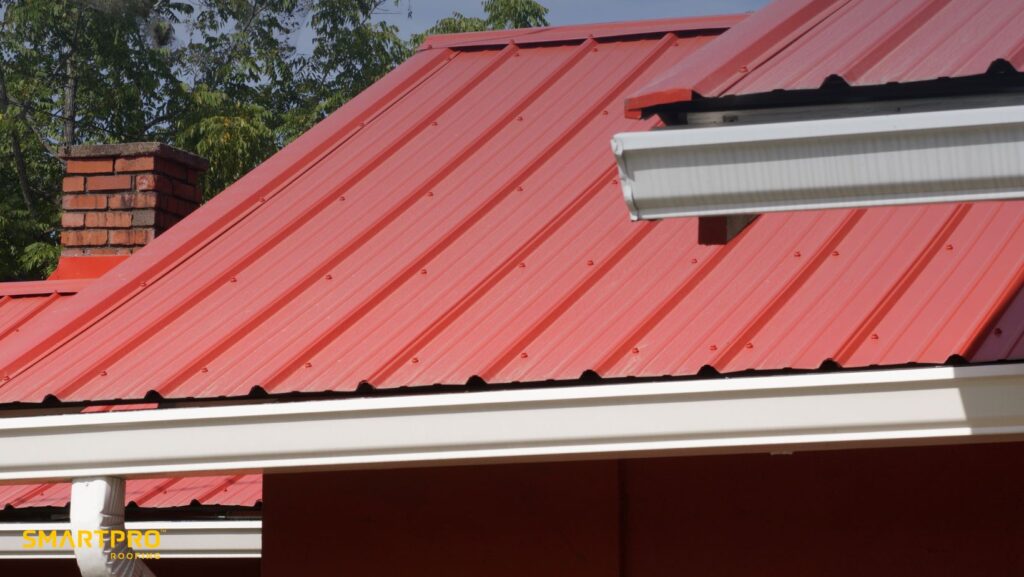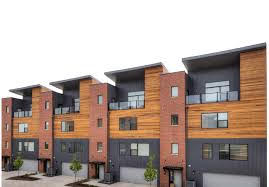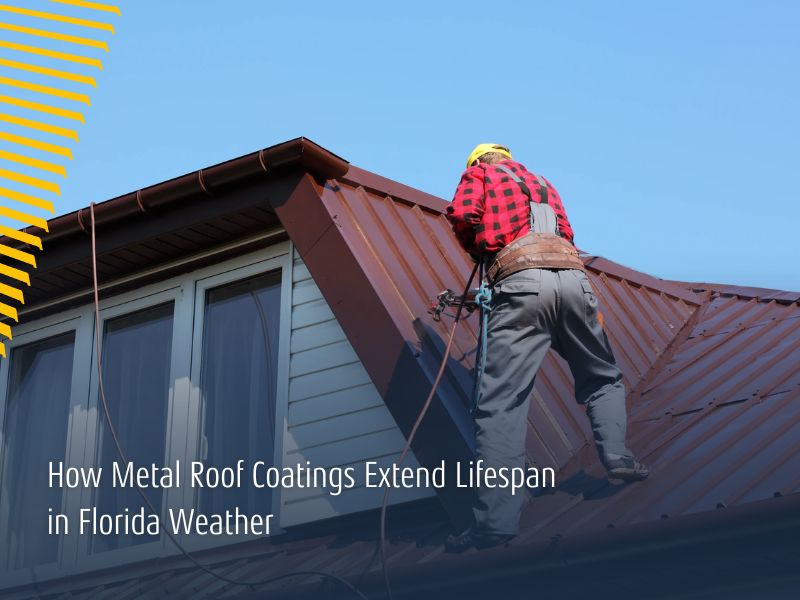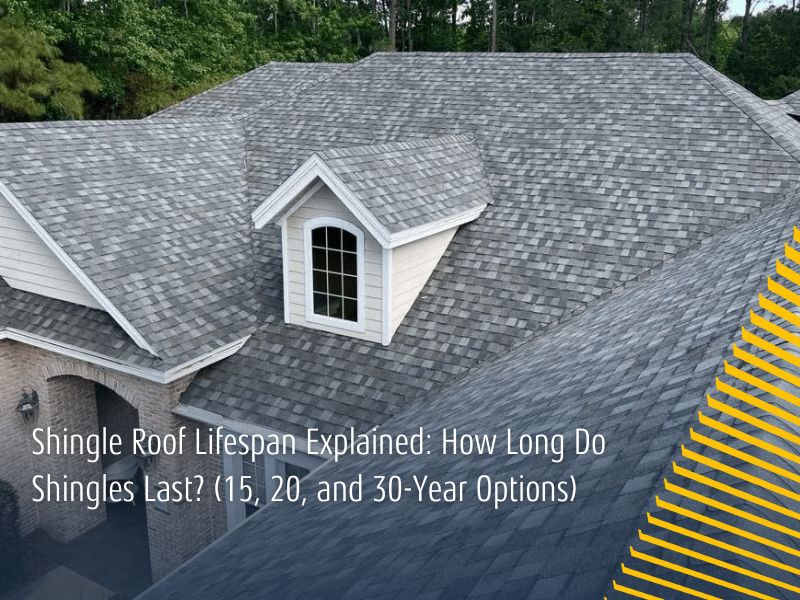Metal roofs improve energy efficiency by reflecting sunlight and reducing indoor heat gain, which can lower cooling costs by up to 40 percent. They last longer than asphalt roofs, require less maintenance, and help reduce urban heat and pollution levels.
Research from the Oak Ridge National Laboratory (ORNL) shows that metal and “cool” roofing systems significantly reduce building heat loads and energy consumption. One ORNL study found that a metal roof configuration reduced heat transfer through the roof and ceiling compared to an asphalt shingle roof.
When homeowners consider replacing their roof, one of the top questions is how to reduce long-term energy costs. A metal roof is one of the best solutions available today, offering outstanding energy efficiency, reflectivity, and durability. This article explores how metal roofs save energy, what makes them energy-efficient compared to other roofing materials, and why they are an increasingly popular choice for energy-saving homes and businesses. If you’re planning a roof replacement, understanding these advantages can help you make a smart, cost-effective decision.
Why Metal Roofs Are Among the Most Energy-Efficient Roofing Options
A metal roof is considered one of the most energy-efficient roofing systems available. Unlike traditional asphalt shingles, metal roofing materials reflect much of the sun’s energy instead of absorbing it. This reflective property directly reduces the amount of heat transferred into your home, leading to lower cooling loads and reduced energy bills.
Energy-efficient metal roofing minimizes heat transfer through superior reflectivity and emissivity. The Department of Energy reports that cool metal roofing systems can significantly decrease annual energy consumption, particularly in warmer climates. When combined with proper insulation and ventilation, a metal roof can save up to 40 percent on cooling costs during the summer.
How Does a Metal Roof Improve Energy Efficiency?

The energy efficiency of a metal roof comes primarily from its ability to reflect solar radiation and radiate absorbed solar energy back into the atmosphere. While asphalt shingle roofs absorb much of the sun’s heat, a pre-painted or granular-coated metal surface reflects it away, keeping indoor temperatures cooler.
An unpainted metal roof will reflect more sunlight naturally, while coatings and pigments enhance solar reflectance for even greater performance. The Cool Roof Rating Council and the Cool Metal Roofing Coalition have both published studies showing that metal roofs offer consistent reductions in energy consumption. Homeowners who use SmartQuote to plan their roof replacement can instantly compare energy-efficient metal roofing options with other materials.
Get your free SmartQuote today to see real-time pricing on energy-efficient metal roofs.
The Role of Reflectivity and Emissivity in Metal Roof Performance
Reflectivity and emissivity determine how well a metal roof can save energy. Reflectivity measures how much solar energy the surface bounces off, while emissivity describes how efficiently it radiates absorbed solar energy. Metal roofs that combine high reflectivity and highly emissive coatings minimize the sun’s heat and contribute to better indoor comfort.
A coating made with reflective pigment ensures that metal roofs reflect the sun’s heat even in darker colors. This reduces the cooling load on air conditioning systems and helps mitigate urban air temperatures. The result is improved comfort and energy savings year-round, even in areas with intense summer heat.
Comparing Metal Roofs with Asphalt Shingle Roofs
When comparing metal roofing systems to a traditional asphalt shingle roof, the difference in energy efficiency is significant. Asphalt roofs trap more heat, leading to higher indoor temperatures and increased cooling demands. A metal roof can save homeowners hundreds of dollars annually in energy costs by reducing absorbed solar radiation.
Asphalt roofs typically last about 20 years, while metal roofs can last 50 years or more with proper installation and maintenance. The life cycle cost of a metal roof is lower, offering superior resistance to heat, hail, and general wear. Homeowners seeking both durability and cost savings often discover through SmartQuote that metal roofs provide exceptional long-term value.
Are Metal Roofs Recognized by Energy Star?
Yes, many metal roofing materials meet Energy Star requirements for cool roofs. These certified materials reflect solar energy efficiently and can lower roof surface temperatures by up to 100 degrees Fahrenheit compared to conventional roofs. The Oak Ridge National Laboratory and the Cool Roof Rating Council have both confirmed these benefits in studies reviewed by Renewable and Sustainable Energy Reviews.
Energy Star-rated metal roofs are especially effective in warmer climates, where the sun’s heat is strongest. Choosing a metal roof with a reflective coating can significantly reduce annual energy costs while qualifying for potential energy-saving incentives.
How Metal Roofs Reduce Urban Heat and Improve Air Quality

Metal roofs help mitigate the urban heat island effect by reflecting the sun’s heat rather than absorbing it. In urban areas with large amounts of concrete and dark roofing, this helps lower surrounding temperatures and reduces air pollution. The environmental advantages of metal roofing extend beyond individual homes, contributing to broader energy efficiency improvements in the built environment.
By reflecting solar radiation and decreasing cooling loads, metal roofs improve air quality and comfort levels in urban environments. When combined with sustainable energy practices, they create measurable ecological benefits for cities.
Understanding Metal Roofing Systems and Proper Installation
A high-quality metal roofing system consists of several key layers: a waterproof membrane, insulation, fasteners, and the metal panels themselves. Proper installation is essential for maintaining durability and performance. If not installed correctly, heat transfer and reflectivity can be compromised.
Standing seam and granular coated metal roofing systems are among the most efficient designs. They ensure tight sealing, prevent leaks, and maximize reflectance. Homeowners using SmartQuote can compare roof material types, coatings, and pricing instantly to select the system that best fits their energy-saving goals.
The Durability and Longevity of Metal Roofs
One of the primary reasons homeowners choose a metal roof is its longevity. Metal roofs can last 50 years or longer, significantly extending roof life compared to asphalt systems. This durability also reduces the need for roof repair and replacement, lowering long-term costs.
Because metal roofs resist hail, wind, and moisture better than most materials, they require less maintenance. Their recycled content and ability to be recyclable at the end of their life further enhance their sustainable appeal. In addition, metal roofs provide consistent performance that supports sustainable roofing initiatives across residential and commercial projects.
Energy-Efficient Metal Roofs
Although metal roofing materials may have higher upfront costs than asphalt shingles, the long-term savings outweigh the difference. Reduced cooling loads, lower energy bills, and minimal maintenance all contribute to lower lifetime cost.
Energy-efficient metal roofing is an investment that pays off through both comfort and savings. The Department of Energy confirms that metal roofs can reduce energy consumption by up to 25 percent annually. When combined with SmartQuote’s transparent pricing, homeowners can clearly see how energy-efficient roofing translates into financial savings.
Compare energy-efficient roof options now with SmartQuote and plan your next upgrade.
How Metal Roofs Contribute to Sustainable Energy Practices
Metal roofs are not only energy-efficient but also environmentally responsible. They often contain recycled content and are fully recyclable at the end of their life. This makes them an essential component of sustainable energy and green building practices.
Because metal roofs reflect solar energy and reduce cooling demand, they complement renewable energy systems like solar panels. Many homeowners pair solar energy systems with metal roofs to maximize efficiency. The result is a highly energy-saving home that benefits both the environment and the household budget.
What Homeowners Should Know Before Roof Replacement

Before replacing your roof, it’s important to evaluate your home’s needs, climate, and energy goals. In warmer climates, cool roofs with reflective coatings provide the greatest benefit. In cooler regions, insulated metal panels may be more effective for energy retention.
SmartQuote allows homeowners to explore multiple metal roofing systems and compare them to other roof materials instantly. It’s the easiest way to see how a metal roof can save energy and provide long-term protection without in-person consultations.
Start your project planning with SmartQuote today: Get an instant SmartQuote now.
Key Takeaways
- Metal roofs save energy by reflecting the sun’s heat and reducing cooling loads.
- Reflectivity and emissivity are key properties that determine a roof’s energy efficiency.
- Energy Star-certified metal roofs can lower surface temperatures by up to 100°F.
- Compared to asphalt roofs, metal roofs offer longer life, superior resistance, and lower maintenance.
- Metal roofs help reduce urban air temperatures and improve air quality.
- Sustainable, recyclable materials make metal roofing a green building solution.
- Using SmartQuote simplifies roof replacement planning with instant, transparent pricing.
Get Started with Your Roof Today
Ready to see exactly what your new roof will cost and buy it entirely online without the sales pitch? Get your free SmartQuote today in just minutes through SmartPRO Roofing’s online platform: Get Your SmartQuote.
Related Reading:











